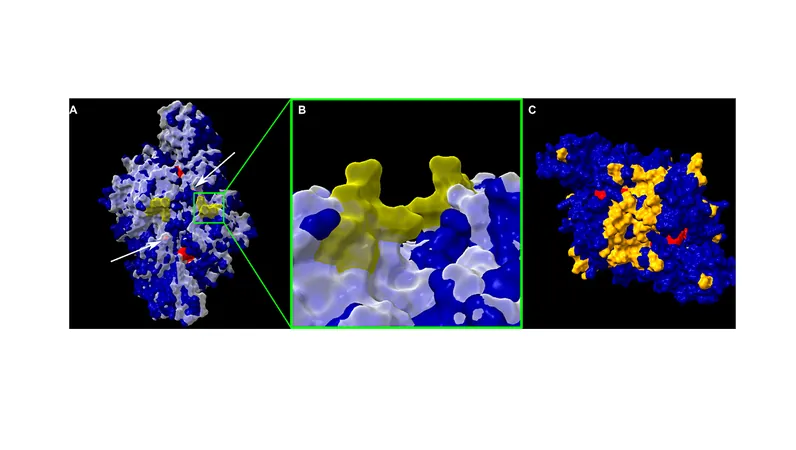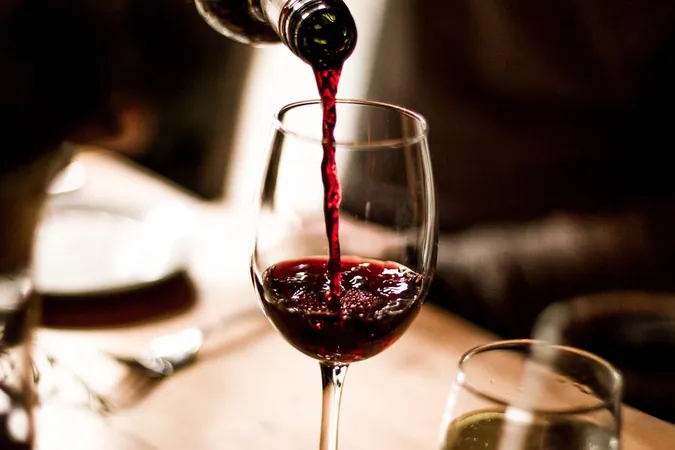
Unlocking Life's Secrets: Cold-Adapted Chemoautotrophy in Icy Depths
2025-06-09
Author: Arjun
The Hidden Power of Rubisco in Extreme Environments
Did you know that the simple act of transforming inorganic carbon into the building blocks of life is largely thanks to a single enzyme called Rubisco? While much of the research has centered on plants and cyanobacteria, there’s a whole world of bacteria thriving in some of the harshest conditions on Earth, utilizing Rubisco for chemolithoautotrophy.
Exploring the Arctic: A Study of Subzero Survivor
In a groundbreaking study, researchers delved into the unique and hostile habitats of Arctic subzero environments, examining 40,000-year-old marine brines trapped in permafrost, known as cryopeg brines, and the first-year sea ice. Astonishingly, they found the Calvin-Benson-Bassham (CBB) cycle prevalent across both settings, though different forms of Rubisco dominated each.
Key Discoveries: The Resilience of Thiomicrorhabdus
From the cryopeg brine, metagenome-assembled genomes (MAGs) unveiled four types with the potential for chemolithoautotrophy, where the Thiomicrorhabdus genus emerged as the star player. Further analyses revealed a complex evolutionary dance among three distinct Rubisco forms (II, IAc, IAq), with form II showing a consistent presence in these frigid environments.
Form II Rubisco: The Cold Warrior
Intriguingly, the researchers modeled the carboxylation rates of the various Rubisco forms under different conditions of CO2, O2, and temperatures. It turns out that form II has a competitive edge in low oxygen environments; however, its advantages diminish in icy conditions. Interestingly, adaptations in form II’s structure, indicated by specific amino acid changes, suggest a remarkable ability to withstand cold—revealing a more exposed active site.
Implications for Astrobiology: Life Beyond Earth?
This essential research hints that the subzero form II of Thiomicrorhabdus holds untapped potential, with unique kinetics and thermal stability worth investigating further. This understanding of autotrophy's limits not only sheds light on life’s resilience in extreme Earth environments but also opens doors to exploring extraterrestrial life, particularly on icy moons like Enceladus and Europa.
Why This Matters: The Future of Life in Extreme Environments
Autotrophy, the transformation of inorganic carbon to biomass, is vital for life to flourish—yet most research has focused on plants and algae. The newfound resilience of bacteria in extreme environments provides a glimpse into Earth’s past and hints at life's ability to adapt on other celestial bodies. This study not only expands the definition of autotrophy itself but also paves the way for future explorations into the icy depths of space, potentially redefining our understanding of life as we know it.


 Brasil (PT)
Brasil (PT)
 Canada (EN)
Canada (EN)
 Chile (ES)
Chile (ES)
 Česko (CS)
Česko (CS)
 대한민국 (KO)
대한민국 (KO)
 España (ES)
España (ES)
 France (FR)
France (FR)
 Hong Kong (EN)
Hong Kong (EN)
 Italia (IT)
Italia (IT)
 日本 (JA)
日本 (JA)
 Magyarország (HU)
Magyarország (HU)
 Norge (NO)
Norge (NO)
 Polska (PL)
Polska (PL)
 Schweiz (DE)
Schweiz (DE)
 Singapore (EN)
Singapore (EN)
 Sverige (SV)
Sverige (SV)
 Suomi (FI)
Suomi (FI)
 Türkiye (TR)
Türkiye (TR)
 الإمارات العربية المتحدة (AR)
الإمارات العربية المتحدة (AR)